Kwame Opoku
Did Germans Never Hear Directly or Indirectly Nigeria’s Demand for Return of Looted Artefacts?
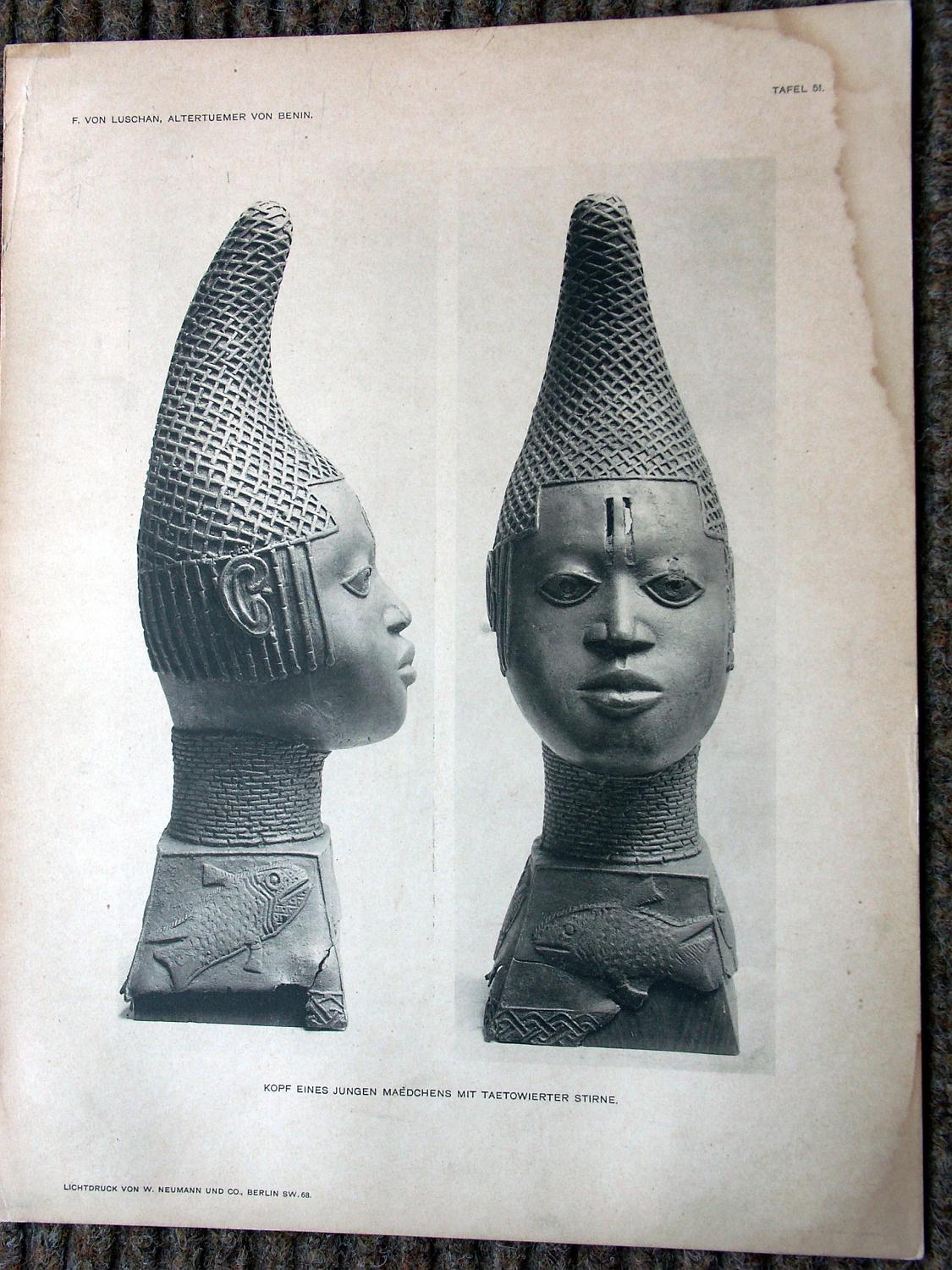
“The restitution of those cultural objects which our museums and collections, directly or indirectly, possess thanks to the colonial system and are now being demanded, must also not be postponed with cheap arguments and tricks.”
Gert v. Paczensky and Herbert Ganslmayr, Nofretete will nach Hause (1)
In discussions on restitution of cultural objects to their countries of origin, we often hear very strange and abstruse arguments from the holders but I must confess I was not prepared for the explanation that came from the Berlin government in answer to a parliamentary question from the German Green Party, in the context of the discussions on the proposed project, Humboldt Forum. This project would involve transferring the ethnological objects, including the looted/stolen ones, from the Ethnologisches Museum, Dahlem, to the centre of Berlin in a new gigantic building now under construction. (2)
The Berlin government of the ruling Social Democratic party declared:
“So far no demand for restitution from either the former Kingdom of Benin or the successor State Nigeria has either directly or indirectly been made to the Federal Government or to the Foundation Preussischer Kulturbesitz.”. (3)
This astonishing and arrogant statement from the Berlin government is singular in its audacity and flies in the face of history and veracity. What it tries to do, rather boldly, is to deny all the discussions on the Benin artefacts since the notorious invasion of Benin in 1897 by the British and the demands of the peoples of the former Benin Kingdom under the leadership of the present Oba and the Government of Nigeria. We would not want to recount all the innumerable demands made by both the Oba of Benin and the various Nigerian governments. There have been in the last few years many meetings and discussions on the restitution of Benin bronzes in most of which German museum authorities participated, such as the recent meetings in Benin City on 19th and 29th February 2013 which issued the so-called Benin Plan of Action on Restitution. (4) The Ethnology Museum, Berlin and the Museum für Völkerkunde, Dresden, participated in this meeting. Are we to understand that the Berlin Government has not been informed directly or indirectly about such meetings and the demands of the Nigerians?
On the question of restitution of cultural artefacts, there has been an incredible play being acted over and over again. When Nigerians and other Africans ask for the return of their cultural objects, there is silence or denial. After a while, the holders declare that nobody has ever asked them to return the items. The Africans ask again and there is silence or further denial. How long will this play go on? The hypocrisy, lies and disrespect are beyond belief. Various international bodies such as the United Nations and UNESCO have recommended returning these objects but Western States and their museums seem not to pay any attention. They should not be surprised if other States follow their non-compliant practice in other areas.
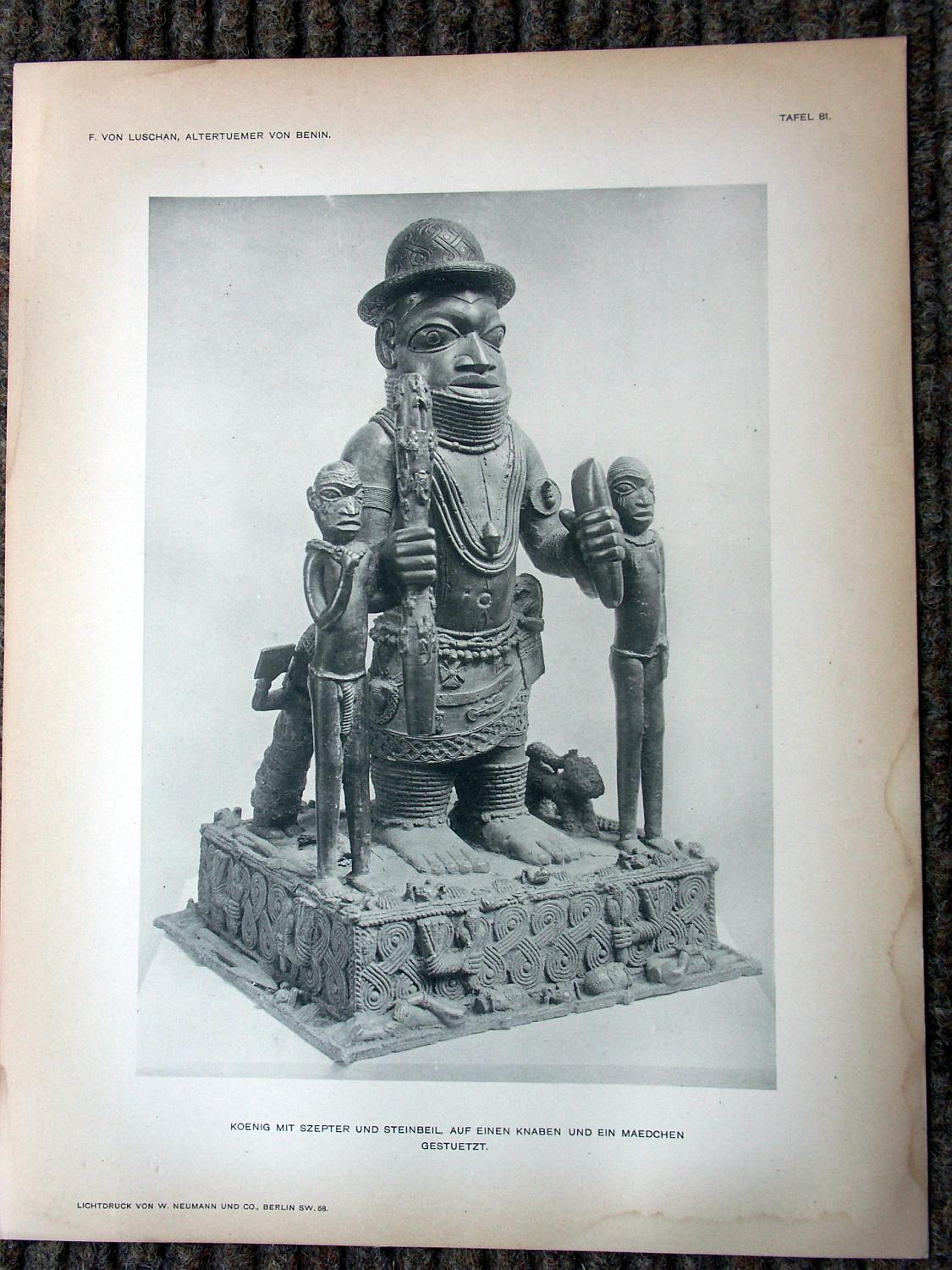 BERLIN AUTHORITIES NOT DIRECTLY OR INDIRECTLY APPROACHED BY OBA OF BENIN OR NIGERIAN GOVERNMENT
BERLIN AUTHORITIES NOT DIRECTLY OR INDIRECTLY APPROACHED BY OBA OF BENIN OR NIGERIAN GOVERNMENT
Whether the Berlin Government is aware or not, a Nigerian Minister of Culture went to Berlin in 2008 to carry the demands of the Nigerian peoples and Government in what was called Berlin Plea for the return of Nigeria’s cultural objects. (5) How far must Nigerians carry their demand before the Berlin Government hears it, if bringing the message to Berlin it is still not enough to make it audible directly or indirectly, for the Berlin Government to notice?
At the opening of the exhibition Benin: Kings and Rituals – Court Arts from Nigeria in 2008 in Berlin, the then Nigerian Minister of Tourism, Culture and National Orientation, Prince Adetokumbo Kayode made a clear demand for the restitution of the Benin objects:
“I wish to appeal to the conscience of all as the BERLIN PLEA OF RETURN OF NIGERIA’S CULTURAL OBJECTS that while Nigeria prepares itself and perhaps Africa prepares an official request for the return of its stolen artifacts, those hearts that are touched by that reckless act of colonization should on their own return all or part of the objects in their collection to Nigeria and Africa. It should not be seen as another declaration of war but a passionate plea”. (6)
Prince Adetokumbo Kayode explained further the significance of Berlin in this matter:
“There is this coincidence of history in this great city by the presence of this exhibition. Berlin was the meeting place for the partitioning of Africa in 1884 (the scramble for Africa). It was here that the instrument of colonization was first hatched. African nations were then vulnerable and very week. They were recovering from the ravages of the Slave Trade. Africa had no voice in the partitioning of its land by the powerful countries of the time. It was an unbalanced equation in the theatre of war. The Berlin Conference led to and gave muscle to the plunder of African colonies and hence Benin Kingdom”.
The Minister underlined the significant role of the looted Benin bronzes and the need for a healing process between the countries responsible for the loot or retention of the Benin bronzes and other African cultural objects, and the victims of these aggressions:
“This exhibition presents the soul of our Nation, the pages of history that were torn away violently, the emblems and insignia of power and authority and the source of inspiration to our country. I hope that this appeal shall be taken in good faith, in brotherhood, love for one another and in bridging gaps between the rich and powerful countries of the world and the weak. It is a way of reaching out to the once oppressed and wounded with the view that there can be a new healing process in the world where we live to share and play responsible roles. This process of voluntary return will go a long way to correct the ills of the past and heal the wounds of colonization”.
But long before Prince Kayode, the great Ekpo Eyo and others had been trying to secure the return of a few Benin bronzes and had sent messages to the embassies of all holders in Lagos:
“By the end of the 1960s, the price of Benin works had soared so high that the Federal Government of Nigeria was in no mood to contemplate buying them. When, therefore a National Museum was planned for Benin City in 1968, we were faced with the problem of finding exhibits that would be shown to reflect the position that Benin holds in the world of art history. A few unimportant objects which were kept in the old local authority museum in Benin were transferred to the new museum and a few more objects were brought in from Lagos. Still the museum was ‘empty’. We tried using casts and photographs to fill gaps but the desired effect was unachievable. We therefore thought of making an appeal to the world for loans or return of some works so that Benin might also be to show its own works at least to its own people. We tabled a draft resolution at the General Assembly of the International Council of Museums (ICOM) which met in France in 1968, appealing for donations of one or two pieces from those museums which have large stocks of Benin works. The resolution was modified to make it read like a general appeal for restitution or return and then adopted. When we returned to Nigeria, we circulated the adopted resolution to the embassies and high commissions of countries we know to have large Benin holdings but up till now we have received no reaction from any quarters and the Benin Museum stays ‘empty’,” (7)
Did the German embassy in Lagos not forward the note from Ekpo to the government in Berlin? We have known of secretaries throwing into wastepaper basket important documents in order to reduce the load of materials to be filed but would a German embassy act in this way?
The Nigerian Parliament asked President Obasanjo in 2002 to request the return of artefacts taken away during the colonial era (8) But would the government of a city that has been at the centre of many international disputes ever read or listen to what other governments were saying or for that matter what the media had been reporting?
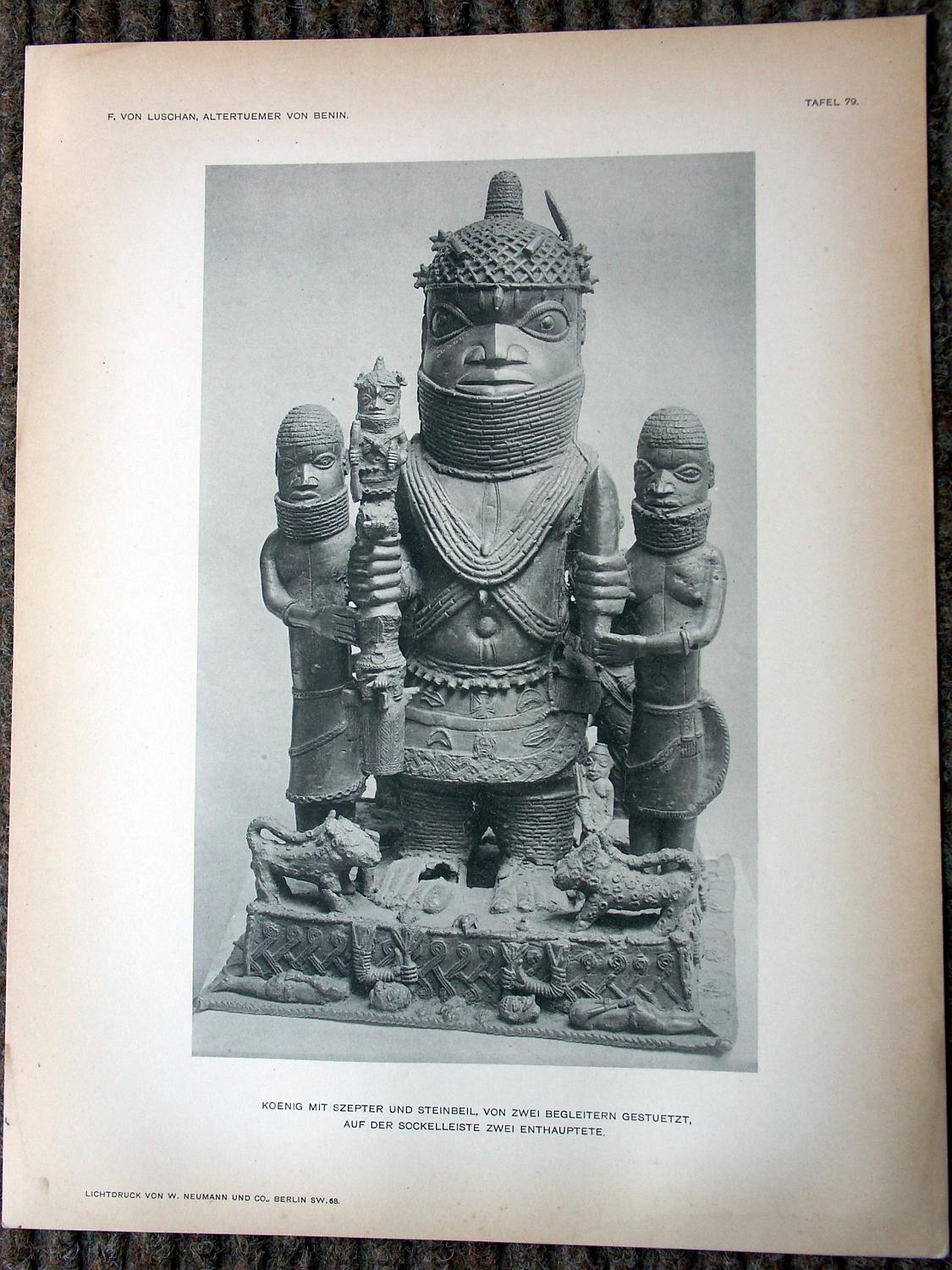 The Oba of Benin sent his brother in 2000 to bring the request for the return of the Benin bronzes to the British Parliament which has become an important document in history and is known as Appendix 21. It is true that the document was addressed directly to the British as being primarily responsible for the Benin invasion and hence for the dispersal of the precious artefacts. But would the German government not hear about this and take notice of the intention and desire of the Oba of Benin? (9)
The Oba of Benin sent his brother in 2000 to bring the request for the return of the Benin bronzes to the British Parliament which has become an important document in history and is known as Appendix 21. It is true that the document was addressed directly to the British as being primarily responsible for the Benin invasion and hence for the dispersal of the precious artefacts. But would the German government not hear about this and take notice of the intention and desire of the Oba of Benin? (9)
If the Berlin authorities have not, directly or indirectly received the demand of the Nigerian, then they must look carefully into their system of communication of information. In the last few years, the demand for the return of the Benin bronzes has been repeated at every Benin exhibition and we can confirm that German museums and other institutions were well represented.
At the opening of the Benin exhibition Benin:Kings And Rituals – Court Arts from Nigeria on 8 May 2007, in the Museum für Völkerkunde, Vienna, the Benin Royal delegation made it absolutely clear in their statement that they wanted their art objects back in Benin. Prince G.I. Akenzua, Enogie of Evbuobanosa, brother of the Oba, elaborated further this demand during his lecture entitled, The Loss of Benin Artworks and their Original Function at the International Symposium which took place on 9th and 10th May 2007 in the Museum für Völkerkunde. There ensued a debate over restitution where Prof. C. Feest, then Director of the Völkerkunde Museum Vienna, repeated the usual western arguments against the restitution of the Benin artefacts. We promptly and unambiguously rejected the baseless arguments. (10)
But even before the opening of the exhibition, the Oba of Benin had expressed in an introductory note to the catalogue of the exhibition the desire of his people to have their artefacts back:
“The exhibition is showcasing some of the works that made Benin (Nigeria) famous. It once again, reminds the world of a civilization truncated by the imperial forces of the colonialist. The works on show at this exhibition are some of the 3000 odd pieces of bronze and ivory works forcibly removed from my great grandfather’s palace by some Britons who invaded Benin in 1897. The British kept some of the loot for themselves and sold the rest to European and American buyers. These works now adorn public museums and private collector’s galleries, all over the world.“
“We are pleased to participate in this exhibition. It links us, nostalgically, with our past. As you put this past on show today, it is our prayer that the people and government of Austria will show humaneness and magnanimity and return to us some of these objects which found their way to your country.” (11)
The modest request of the Oba of Benin to have back some of the looted artefacts was promptly rejected in an arrogant and Eurocentric perspective in the preface of the same catalogue by the directors of the museums that organized the exhibition with Nigeria. The Preface was signed by Prof. Christian Feest, Director, Museum für Völkerkunde Wien, Jean-Pierre Mohen, Director, patrimoine et collections, musée du quai Branly, Paris, Dr.Viola Koenig, Director, Ethnologisches Museum, Staatliche Museen zu Berlin and James Cuno, President and Eloise W.Martin Director, The Art Institute of Chicago.
It is clear from the rejection by the museum directors that the demand by the Oba was directed to all the Western holders of the looted bronzes and not only Austria. How come then that the authorities in Berlin can now in 2013 declare they have not been directly or indirectly approached by the Oba or the Nigerian authorities?
The Director-General of the National Commission of Museums and Monuments, Yusuf Abdallah Usman has multiplied recently the request for the return of Nigerian artefacts from abroad:
“For the avoidance of doubt, we hereby place it on record that we demand, as we have always done, the return of these looted artworks and all stolen, removed or looted artefacts from Nigeria under whatever guise”. (12)
We submit that the request by the Oba of Benin for the return of some of the looted Benin bronzes in the catalogue of the exhibition constitutes a direct request to the German museums and the German government represented at the opening of the exhibition and to those who were not there. The demand made at the symposium by the brother of the Oba is also to be considered as a direct request to all holders of Benin bronzes. The disrespect of a reigning monarch by Western museums and governments cannot be accepted as sufficient for declaring such requests, made in writing or to the hearing of representatives and scholars, as non-existent and should not be allowed to negate such clear and direct expressions of will.
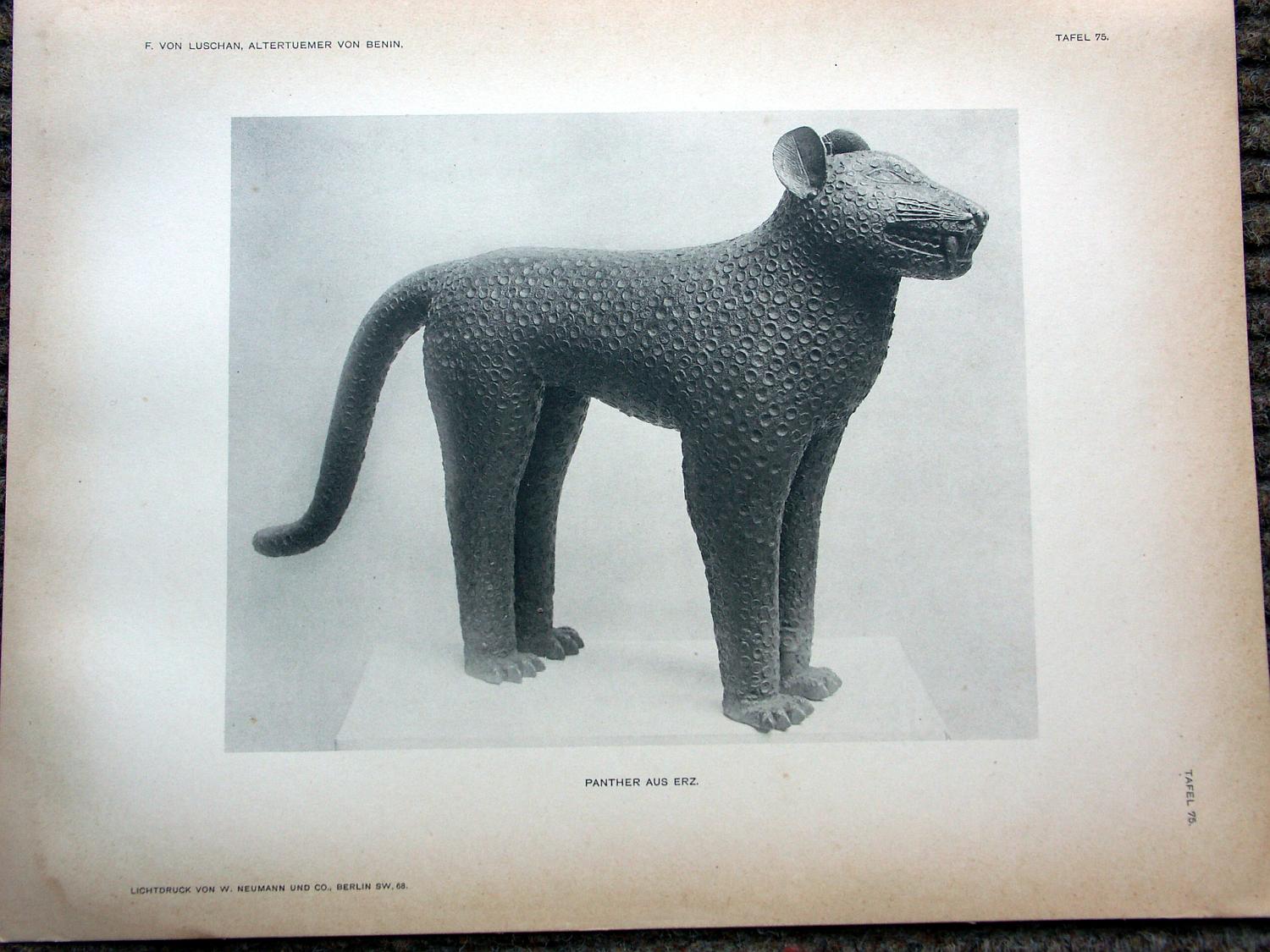 The declaration by the Berlin authorities that they have not been directly or indirectly approached with a demand for restitution by the Oba of Benin or the Nigerian government is based on a basic assumption that a person or entity that has lost property must submit a request to the holder of the property. In other words that in the absence of such a request the Germans cannot return the Benin bronzes.
The declaration by the Berlin authorities that they have not been directly or indirectly approached with a demand for restitution by the Oba of Benin or the Nigerian government is based on a basic assumption that a person or entity that has lost property must submit a request to the holder of the property. In other words that in the absence of such a request the Germans cannot return the Benin bronzes.
Readers will no doubt be well aware of the farcical games played with the Egyptians regarding the demand of the restitution of Nefertiti. (13)
But is there such a rule under International Law or Municipal Law that would prevent the Germans and other Western States from returning the Benin artefacts in the absence of a demand? (14)
The United Nations General Assembly has since 1972 requested Member States in several resolutions to return cultural objects which were taken away during the colonial days. The restitution of cultural objects to the countries of origin has become a permanent agenda item. In its resolution entitled “Return or restitution of cultural property to its country of origin” of 4 December 2006, (A/RES/61/52,) the General Assembly reiterated the importance of restitution to these countries and called on all bodies of the United Nations and UNESCO as well as Member States ‘to continue to address the issue of return or restitution of cultural property to the countries of origin and to provide appropriate support accordingly’. (15) All these resolutions have not moved any of the western countries that hold illegal or stolen cultural objects.
Several international conferences have also urged the return of artefacts. For example, the UNESCO International Conference, The Return of Cultural Property to its Countries of Origin, Athens, 17-18 March, 2008 urged museums to initiate dialogues on the return of important cultural property to the country and community of origin. (16)
Clearly, the refusal to return stolen cultural property violates the right to culture and right of access to culture as provided for in the Universal Declaration of Human Rights (1948), the International Covenant on Economic, Social and Cultural Rights (I966) and the International Covenant on Civic and Political Rights (1966) in so far as the deprivation of a whole people or community of its cultural objects renders it impossible for the individuals in that community to exercise rights guaranteed under the international instruments. Indeed some acts of refusal to return cultural objects, such as crosses or other religious symbols must be considered as violations of religious freedom. The religious and ritual objects of the Edo are necessary if they are to follow their tradition and religion. It is remarkable that some States that pride themselves of their religion as part of their culture and even require immigrants to adopt these values do not seem worried by the thought that they are preventing others from following and cultivating their traditional and religious values.
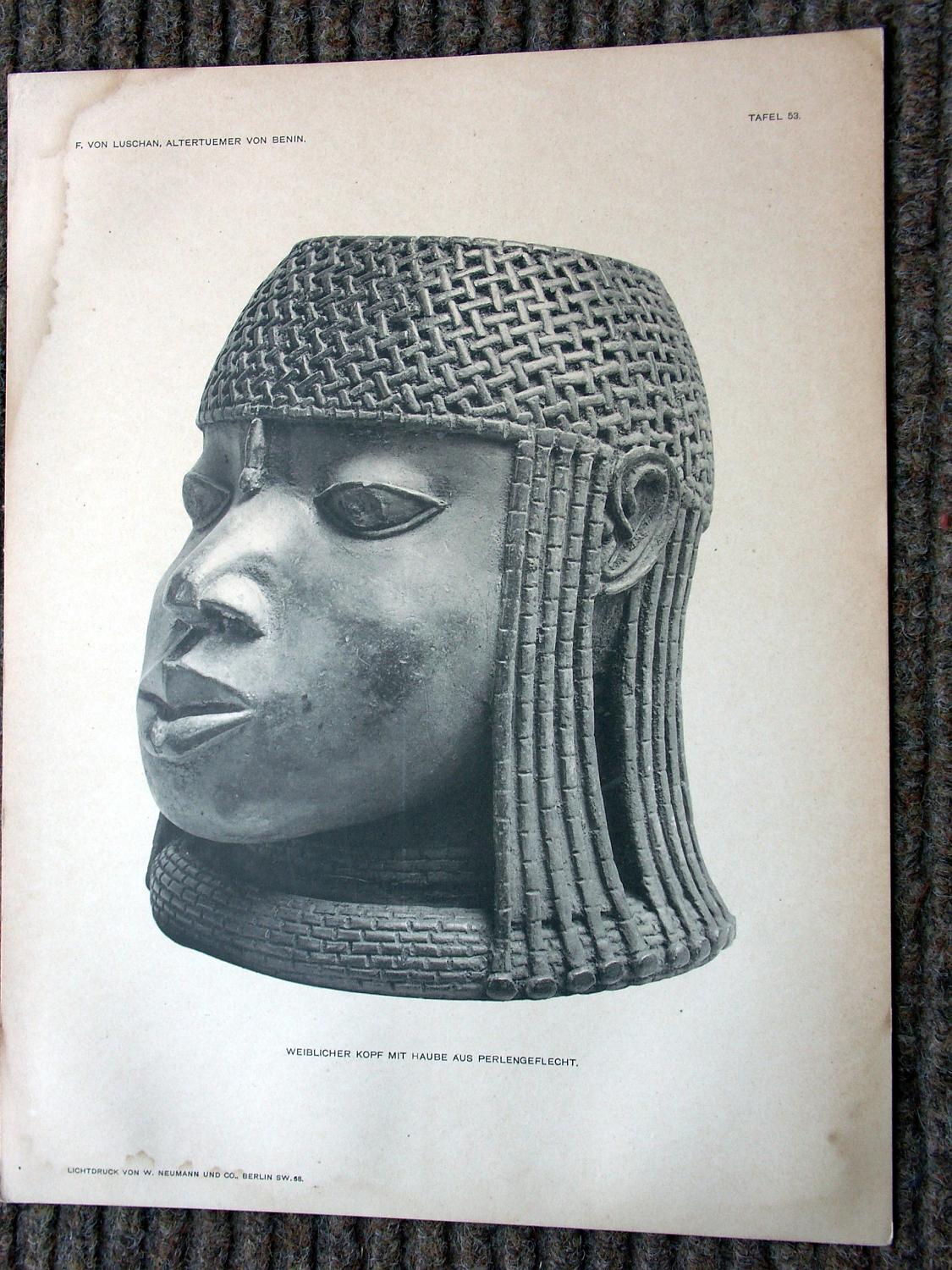 Western museums have not been enthusiastic to help in repatriating looted artefacts such as the Benin bronzes because of their complicity with colonial interventions and looting, Ana Filipa Vrdoljak has rightly declared:
Western museums have not been enthusiastic to help in repatriating looted artefacts such as the Benin bronzes because of their complicity with colonial interventions and looting, Ana Filipa Vrdoljak has rightly declared:
“The history of museums shows that these institutions have facilitated, justified and benefited from colonialism and related policies of discrimination, assimilation and genocide. They have also often served to inform and engage broader societal concerns. The present-day ‘commitment to righten historic wrongs’ by former metropolitan powers and their museums must include restitution claims of indigenous and other colonised peoples. Museums must be actively involved in reversing and ameliorating the ongoing effects of these policies and practices”.(17)
The Convention on the Means of Prohibiting and Preventing the Illicit Import, Export and Transfer of Ownership of Cultural Property (1970)considers in its preamble that “cultural property constitutes one of the basic elements of civilization and national culture, and that its true value can be appreciated only in relation to the fullest possible information regarding its origin, history and traditional setting” and states that “as cultural institutions, museums, libraries and archives should ensure that their collections are built up in accordance with universally recognized moral principles”. (18)
The ICOM (International Council of Museums) Code of Ethics for Museums, 2006, which sets minimum standards for museums and their staff, provides as follows, regarding return of cultural property:
6.1 Co-operation
Museums should promote the sharing of knowledge, documentation and collections with museums and cultural organisations in the countries and communities of origin. The possibility of developing partnerships with museums in countries or areas that have lost a significant part of their heritage should be explored.
6.2 Return of Cultural property
Museums should be prepared to initiate dialogues for the return of cultural property to a country or people of origin. This should be undertaken in an impartial manner, based on scientific, professional and humanitarian principles as well as applicable local, national and international legislation, in preference to action at a governmental or political level.
6.3 Restitution of Cultural property
When a country or people of origin seeks the restitution of an object or specimen that can be demonstrated to have been exported or otherwise transferred in violation of the principles of international and national conventions, and shown to be part of that country’s or people’s cultural or natural heritage, the museum concerned should, if legally free to do so, take prompt and responsible steps to cooperate in its return. (19)
In view of the above, it is our considered opinion that the lack of a formal/official request is no ground for the holding State and its institutions for not initiating a process of restitution or for refusing to return stolen cultural property. On the contrary there is a positive duty on museums holding looted/stolen/seized cultural items to start discussing their return, whether there is a formal/official request or not.
Therefore, the declaration that the Berlin authorities have not been approached directly or indirectly by either the Oba of Benin or the Nigerian authorities, cannot be accepted as an excuse for not returning or discussing the return of the cultural objects to the Oba of Benin.
Notwithstanding the above observations, we have suggested that Nigerian authorities write directly to museums with large collections of Benin artefacts in order to prevent the holders of looted artefacts from saying that there has not been any demand, an easy but unconvincing argument. The argument demonstrates beyond all reasonable doubt the unwillingness of the holder to envisage restitution. This position strengthens the determination of the holder not to consider the issue of restitution on its merits by blocking the demand at its very first step.
The Oba of Benin sent in 2009 letters hand-carried to the board of trustees of the Art Institute of Chicago and to the Field Museum,Chicago, requesting restitution of some Benin artefacts. Until today, there has not even been an acknowledgement of receipt from both institutions. Such is the conduct of those allegedly promoting understanding between different cultures of the world.
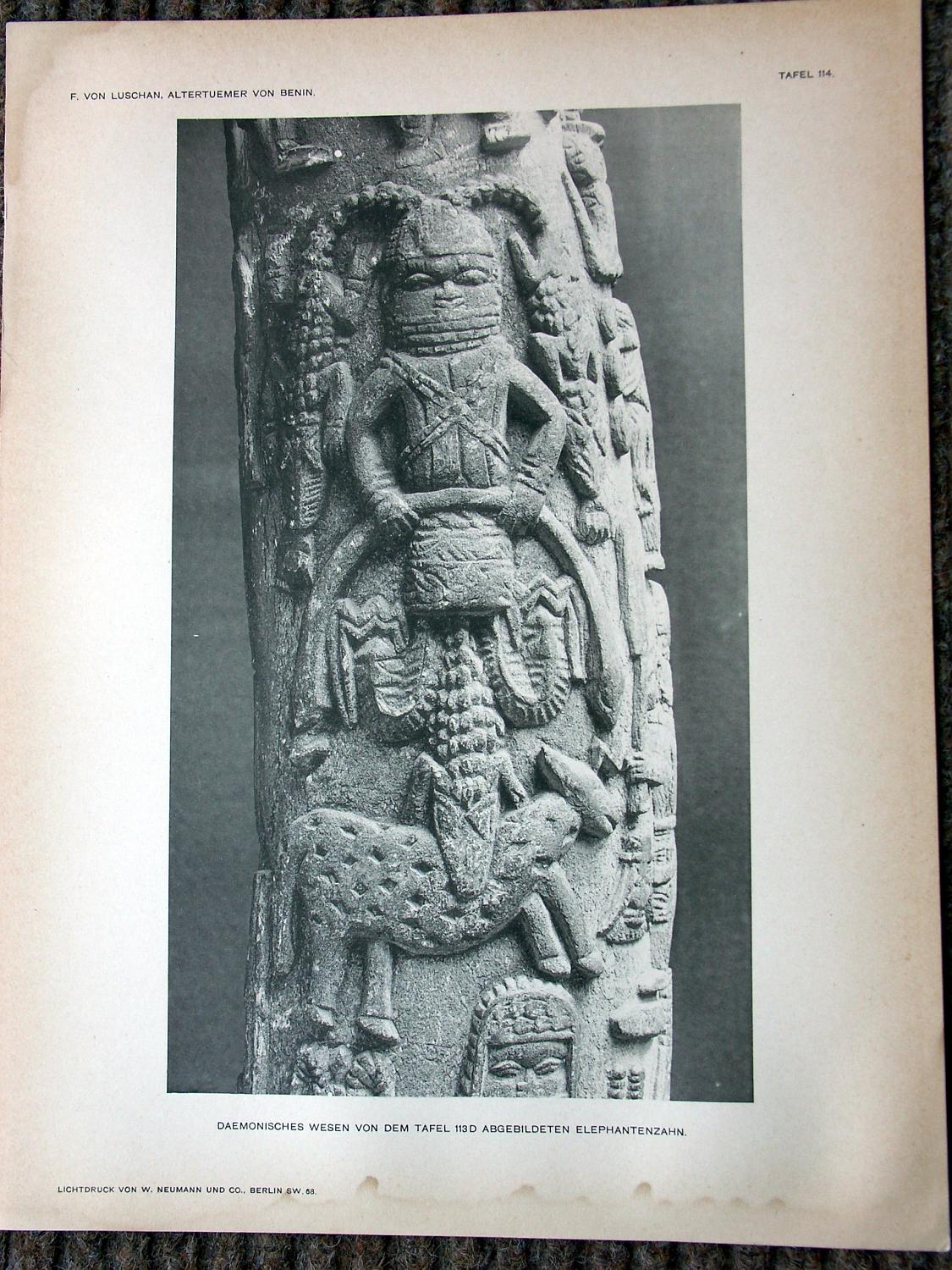 “LEGAL ACQUISITION” OF BENIN BRONZES BY GERMANY
“LEGAL ACQUISITION” OF BENIN BRONZES BY GERMANY
The statement by the Berlin authorities takes a well-known second line of defence that argues that Germany acquired the Benin bronzes legally and therefore has no obligation to return them to the Oba of Benin.
There is no need here to recount the full story of the notorious bloody invasion of Benin in 1897 by the British army and the subsequent looting of the cultural artefacts. (20)
In answer to the question whether the Government considered as legal and legitimate the many Benin bronzes that the British looted in their invasion of Benin in 1897 and are now in the Ethnologisches Museum, Berlin, which the Benin people are seeking to recover, the government answered as follows
“A greater part of the 507 objects that constitute the Benin-Collection of the Ethnologisches Museum was acquired between 1897 and 1925 from the art market in London, and partly in Lagos. The Government and the Foundation Preussischer Kulturbesitz are of the view that these objects were legally acquired and that there is no International Law basis for demands for restitution”(21)
As we have already discussed above the government stated that there had been no demands for restitution from the Oba or the Nigerian authorities.
The assertion that the Germans acquired legally the Benin bronzes that had been looted by the British in their notorious invasion of Benin in 1897 must not be accepted without discussion as to the alleged “legality”. As has been correctly stated above, the British sold the looted artefacts in London, on open market. The Germans were very enthusiastic purchasers of the Benin bronzes and indeed it was the German acquisition of various objects that prompted British institutions to increase their own stock. (22) The then director of the Ethnologisches Museum Berlin, Felix von Luschan had been one of the first to recognize the excellent workmanship that had gone to produce those artefacts.(23) Luschan had even advocated the use of force in acquiring cultural objects from peoples the European ethnologists considered to be condemned to disappear from the face of the earth. This racist conception which existed in German intellectual tradition and was present in the atrocities in Namibia continued its trajectory under Nazi rule in Germany and elsewhere.
With racist theories of European superiority and doubts whether Africans were human beings with intelligence, the British invasion of Benin was certainly not regretted by people like von Luschan and even long after his time, one seldom hears any expressions of regret by Europeans regarding the killings of thousands of Benin people (Edo). This is in contrast to regrets and apologies rendered in the case of victims of Nazi atrocities and aggressions.
Austrians, Germans and others who obtained Benin Bronzes from the British must be considered as not having any valid title to the artefacts they hold. In any case, the law of Benin never authorized the seizure of the Oba’s property. Benin being the place of the pretended acquisition by the British, the law of Benin
should govern the act of acquisition. Many have discussed this issue as if there were no laws in Benin in 1897 that would forbid such patent violation of rights in property. Joseph Egharevba, leading authority on Benin history and laws, states in his classic work, The Benin Laws and Customs (1947) that the person of the Oba is sacred and his property cannot be touched without his consent. He is the source of law and could make and repeal laws. The British of course were not interested in presenting a true picture of Benin society but preferred to depict the kingdom as a land of juju, cannibalism and human sacrifice. But what about others who have discussed this issue? How can they assume implicitly that Benin Law was not relevant, unless they were only concerned with power? But power is not law.
Legality of German purchases of Benin objects presupposes the legality of the British acquisition of the looted objects. The British looted the artefacts during their notorious invasion of Benin City. Does looting of property of others confer legality on the looter? Clearly, no legal system would accept the transfer of proprietary rights in this violent manner. There may be de facto acceptance of this illegality but does the fact that no one can push the looter to return the looted goods confer legality on the violent looter? Some have argued that the law in 1897 authorised a conqueror to take all the cultural artefacts of the defeated. But those arguing this way do not specify which law. Is it English Law, European International Law, from which Africans were excluded, or Benin Law?
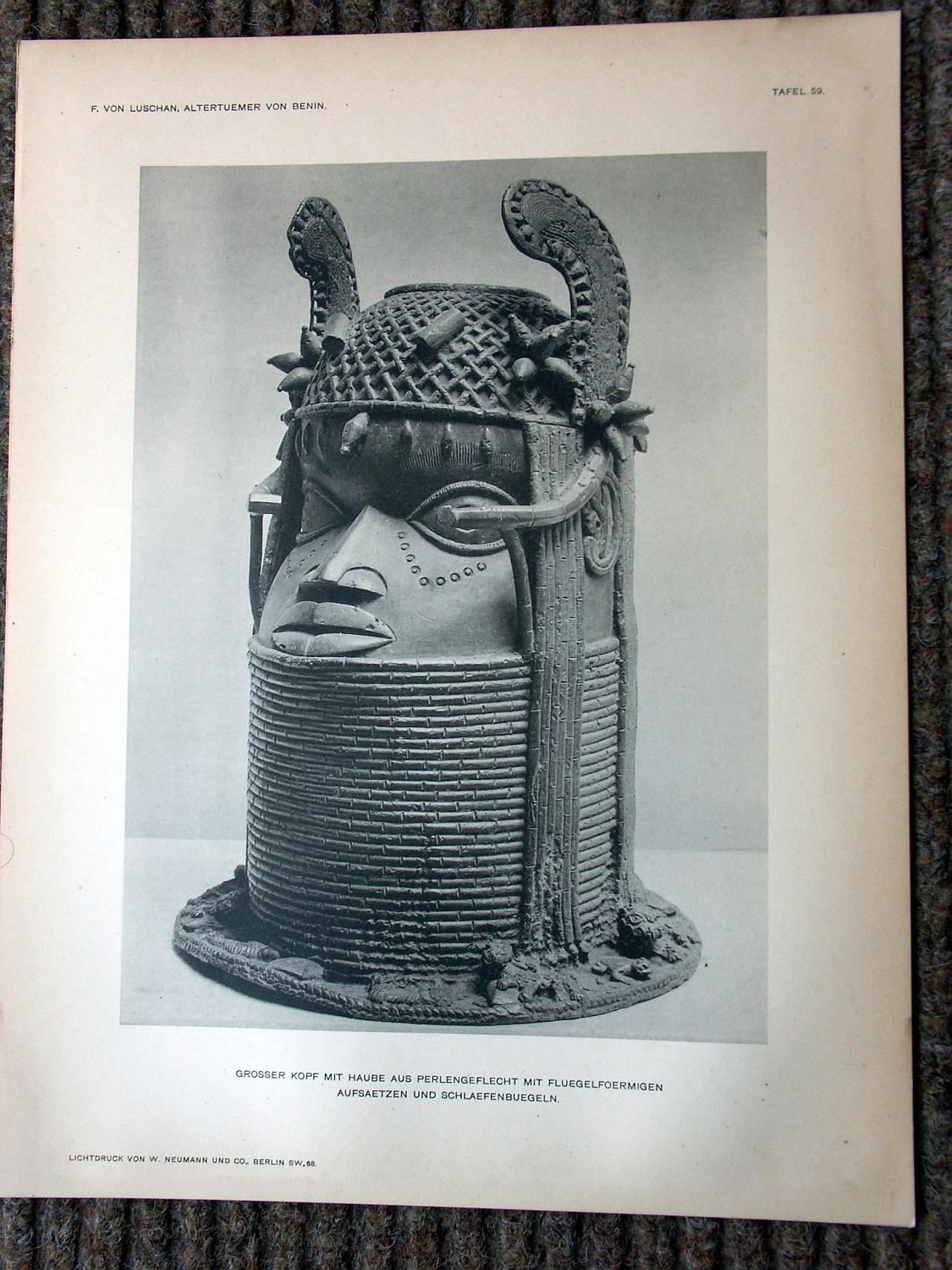 After the devastating lootings of Napoleon and his troops in 1815 European International Law clearly regarded looting of cultural artefacts as illegitimate. Vrdoljak has stated:
After the devastating lootings of Napoleon and his troops in 1815 European International Law clearly regarded looting of cultural artefacts as illegitimate. Vrdoljak has stated:
“By mid-1815, there was broad agreement that the French confiscations of cultural objects were contrary to contemporary rules of law and that objects could not remain in Parisian collections.” (24)
Again we have the view expressed by Andy Ho that it was the Congress of Vienna (1815), held after the defeat of France at Waterloo, that settled the illegality of looting works of art in wartime:
“The peace treaty explicitly required France to return a very wide range of cultural property to European countries from which they had been looted.
Clearly, then in 1860, when the Anglo-French force invaded Beijing, it had no legal rights under prevailing international law to the antiquities it took”. (25)
Prof, Neil Brodie has written:
“It should be recognized internationally that the Benin artworks were taken forcibly by an imperial power and, following the precedents of 1815 and
1945, that they should be returned. Ownership should be vested with an appropriate authority in Nigeria”. (26)
Whatever may have been the legal position in European International Law, it was clearly not part of African International Law that conquerors could take away the cultural objects of a defeated nation. In any case, Africans were not considered to be part of European International Law and any rules and practices developed in this respect clearly did not apply to Benin’s cultural objects. Incidentally, there is not one single example of a victorious African army stealing the cultural objects of the defeated and proudly displaying in its country.
Benin law would not have authorized the looting of the Oba’s property since his person is regarded as untouchable and all the property under his care is also protected. The British looting of the Benin bronzes was from a legal point of view illegal and illegitimate. It follows from the above that the looters, the British, could not transfer any proprietary rights to the Germans. They may have paid cash but the objects they allegedly bought were tainted with illegality ab initio. Moreover, the Germans knew very well that the objects they were buying were illegally transferred from Benin City to London. They bought the Benin Bronzes, from a notorious British auctioneer, W.D.Webster who also sold Benin artefacts to Austrians. Indeed the first auction took place a few months after the invasion, in May 1897. Many of the objects the Germans and Austrians bought must have had some of the blood of the people of Benin on them, fresh from the battlefield. Is that what the Berlin government regards as legal acquisition?
The legality of the British “acquisition” by violence, by invading an African country, thousands of miles from Europe, has never been considered by an impartial judiciary system but most honest people will regard such violent action as illegal. Moreover, the Germans who allegedly bought the artefacts from the British could not have legitimately acquired valid rights for lack of bona fides, good faith, “guten Glauben”. In any case, the Germans cannot completely distance or disassociate themselves from the criminal invasion of Benin in 1897. After all, it was the attempt by the British to enforce the division of areas of control or influence which the Germans and the British, with others, had set up in 1885 in Berlin that led to the conflict between the British and Oba Ovonramvem who resisted British attempts to exercise control over Benin. The conflict that eventually led to the looting of the Benin artefacts cannot be seen as a remote consequence of the Berlin Conference but must be accepted as a direct result of that division of areas of control by the Europeans. At the time of the 1885 conference, Africa and the areas the Europeans allocated to themselves were known to be inhabited and it was clear to all that conflicts would ensue.
Contracts of purchase between the Ethnologisches Museum and British dealers should not be treated like ordinary contracts between German tourists and English shopkeepers in Regents Street. The historical context must be seriously considered to give the act of purchase its full significance and meaning.
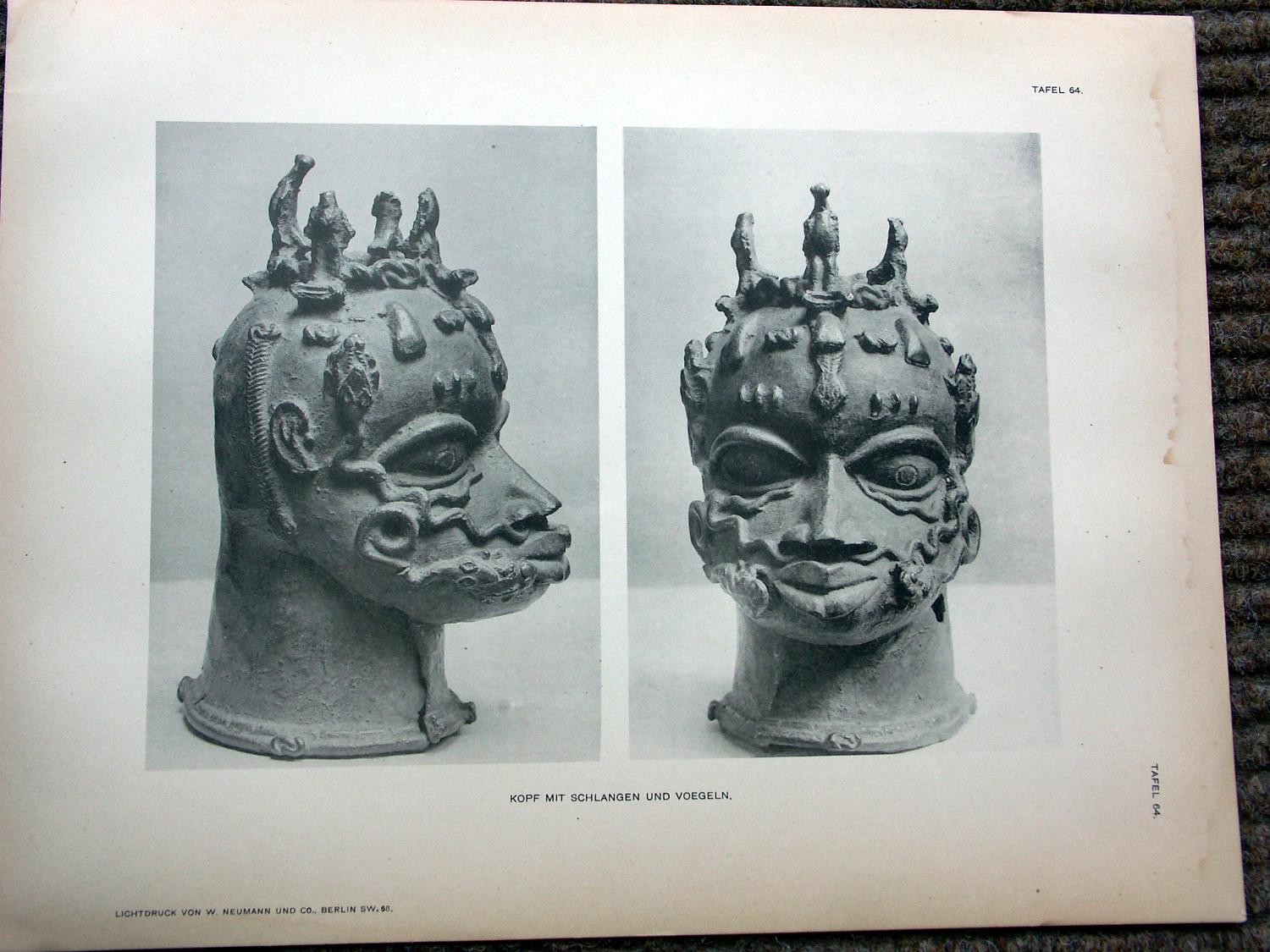 MEETINGS ON “RESTITUTION” OF THE BENIN BRONZES.
MEETINGS ON “RESTITUTION” OF THE BENIN BRONZES.
In answer to the question what meetings had been held with the owners of the Benin bronzes, the Berlin government answered as follows:
“Since 2010 there have been regular meetings between representatives of the King of Benin, the National Commission of Museums and Monuments in Nigeria and various European museums with large Benin collections (London, Vienna, Leiden, Stockholm and Dresden) on the question of treatment of objects from the Kingdom of Benin. The agreed aim of all participants is in the long term to find a possibility to present in Nigeria objects from the Benin collections in Europe. At present, the main emphasis is on the work of documentation of Benin collections in Europe to be placed on the internet as well as the intensification of the cooperation between all the participating museums and institutions”.(27)
Many will be surprised by the statement that the various meetings held since 2010 between the representatives of the Oba of Benin, the National Commission of Museums and Monuments and representatives of European museums at London, Vienna, and Leiden. Stockholm and Dresden, holders of large collections of Benin artefacts, were about documentation of the artefacts; a documentation that would also be placed in the internet and an eventual display of some of the artefacts in Nigeria. Up to now, many had the understanding and the impression that these meetings were about the restitution of at least some of the looted Benin bronzes. Newspaper reports as well as statements from the National Commission had led to the belief that some progress had been made in the direction of restitution. (28)
The explanations of the recent meetings as given by the Berlin government correspond essentially to what happened in the meeting in Benin City. Though the document issued at the end of that meeting was entitled The Benin Plan of Action on Restitution, there was nothing in it that envisaged restitution of the precious Benin artefacts. No wonder that the representative of the Oba declared he would not take part any more in such meetings in future. Besides, the British Museum did not take part in the meeting. (29)
HISTORICAL CONSCIOUSNESS, POLITICAL AND MORAL RESPONSIBILITY
The Berlin government expressed in its response its conviction that the ICOM Code of Ethics forms the basis of the work of the museums in Berlin and that they are aware of their historical and political responsibility in the treatment of acquisitions from the colonial period. (30)
To state that the vast majority of the acquisitions in the Benin collection were made between 1897 and 1925 and then declare that ICOM rules adopted in 1986 form the basis of the work of the museum requires some explanation in order to be convincing. Certainly, the Ethnologisches Museum has not been following the ICOM rules as far as they relate to restitution. As for the important acquisitions of Benin artefacts, they were made before the ICOM Code of Ethics was established. One cannot help feeling that the name of ICOM was thrown into the statement by the Berlin government to secure for the museums a veneer of legitimacy and legality. The statement seeks to create an aura of rectitude around the museum in order to avert criticisms especially from the youth.
If the Berlin museums were really conscious of their historical and political responsibility as regards artefacts acquired in the colonial era, they would not want to be seen arguing with Africans about the return of cultural artefacts that are undoubtedly African.
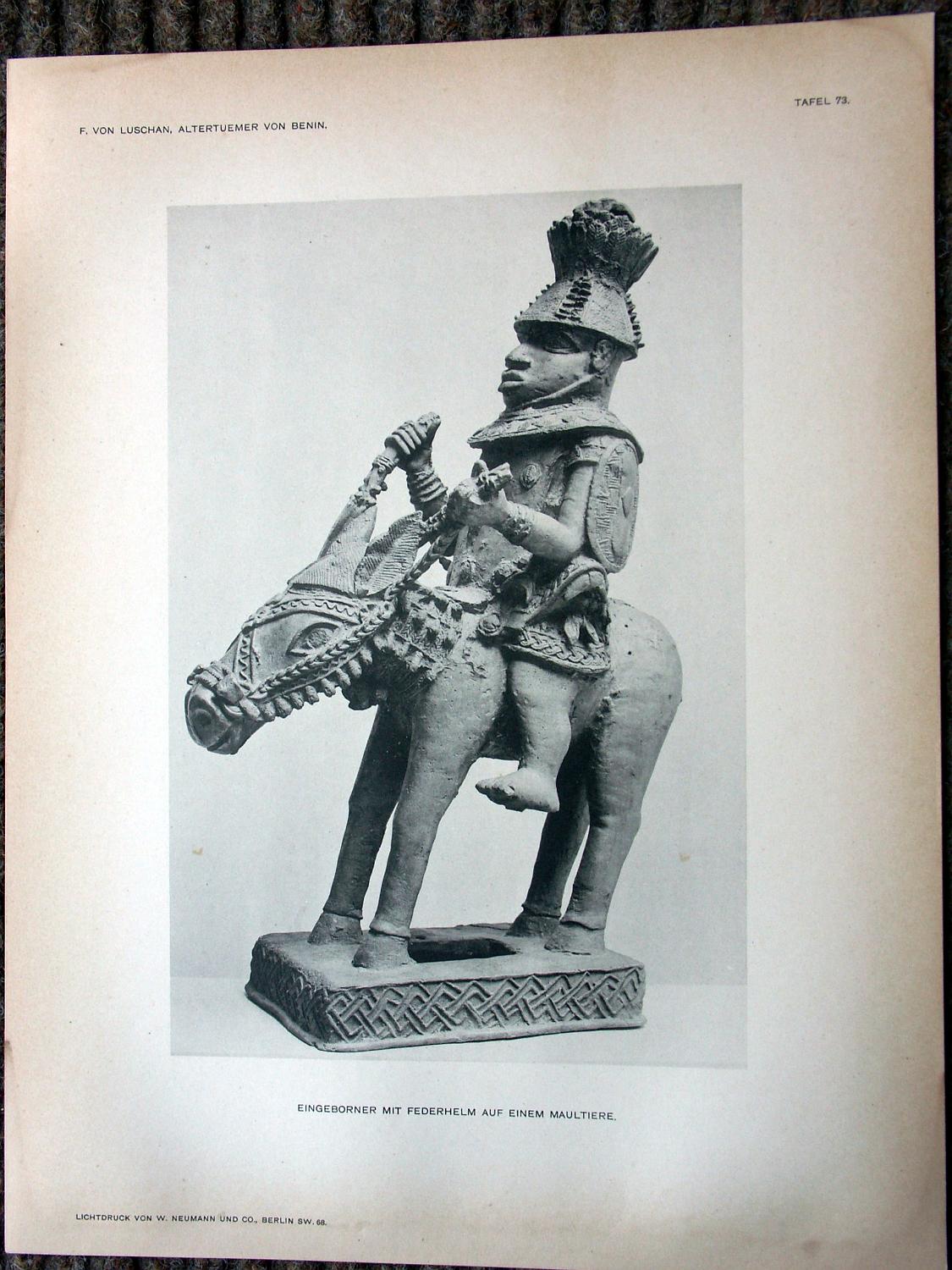 The cruelty and unbelievable oppression in German colonies require no elaboration here. (31) It was in an atmosphere of excessive oppression that many artefacts were collected from the German colonies. When it is said that many artefacts were given to the museums as gifts by German travellers, it should be remembered that these were objects extracted from Africans who had no choice but to hand over to the Europeans whatever they wanted. In a study entitled “The Position of Africans in the German Colonies’”, Helmut Stoecker declared;
The cruelty and unbelievable oppression in German colonies require no elaboration here. (31) It was in an atmosphere of excessive oppression that many artefacts were collected from the German colonies. When it is said that many artefacts were given to the museums as gifts by German travellers, it should be remembered that these were objects extracted from Africans who had no choice but to hand over to the Europeans whatever they wanted. In a study entitled “The Position of Africans in the German Colonies’”, Helmut Stoecker declared;
“The almost total absence of genuine liberalism among the Germans in the colonies, the grim and obstinate anti-African racism already referred to, and the preference for direct and openly practiced oppression all combined to make a situation possible in which ‘nearly every white man walks around with a whip and almost every white man indulges in striking any black man he chooses to, as Colonial Secretary Bernhard Dernburg discovered in Dar es Salaam in 1907.” (32)
Cornelia Essner has written the following:
“That the acquisition of ethnografica in the colonial time was on the basis of more or less “structural violence” will not be pursued in detail in this context. Some individual contemporaries were perfectly aware of this fact. Thus one Africa traveller and resident in the German Empire in Ruanda, Richard Kandt, wrote in 1897 to Felix von Luschan, Deputy Director of the Ethnology Museum, Berlin, as follows; “It is especially difficult to procure an object without at least employing some force. I believe that half of your museum consists of stolen objects.” (33)
We all recollect that Berlin was the place where the imperialist powers of Europe met in 1885 and divided Africa among themselves and thus set in motion a system of government that brought untold suffering on the African peoples. We need only remember Namibia, formerly German colony of South West Africa where the cruelty of German colonial rule exceeded all bounds and stamped Germany with a terrible reputation only surpassed by Nazi Germany. The effects of the oppressive German regime are still felt in Namibia where recently the human remains of those Namibians massacred and brought to Germany have been returned after arduous negotiations. Germany still refuses to apologize or pay compensation. (34)
Given the background of German colonial experience in the collection of artefacts in Africa and the pre-eminent role of the Ethnologisches Museum in this matter and being fully aware of the history of the acquisition of the Benin Bronzes, a Berlin government and its museums should be adopting a different position from what is conveyed by the response to the Green Party. They should be interested in returning at least some of the looted artefacts and seek a reasonable compromise. They would in any case seek to avoid endless discussions on such an issue and endeavour to prevent any impression of continuity in the present and past German practice and ideology with regard to collecting cultural artefacts of others. But can one achieve this and still maintain the loot of the past, albeit via the British?
From the 507 Benin artefacts that the Berlin regime mentioned (although by some counts there should be more, about 580) some 307 for example, could be returned to Benin City; arrangements could be made for lending some of the remaining objects if the Nigerians request. From the answer of the Berlin government, there is no trace of a sense of historical responsibility and moral consciousness. The government is out of tune with the spirit of our times which is to return artefacts wrongly taken away from colonial and other oppressed peoples. Magnus Magnusson has rightly stated:
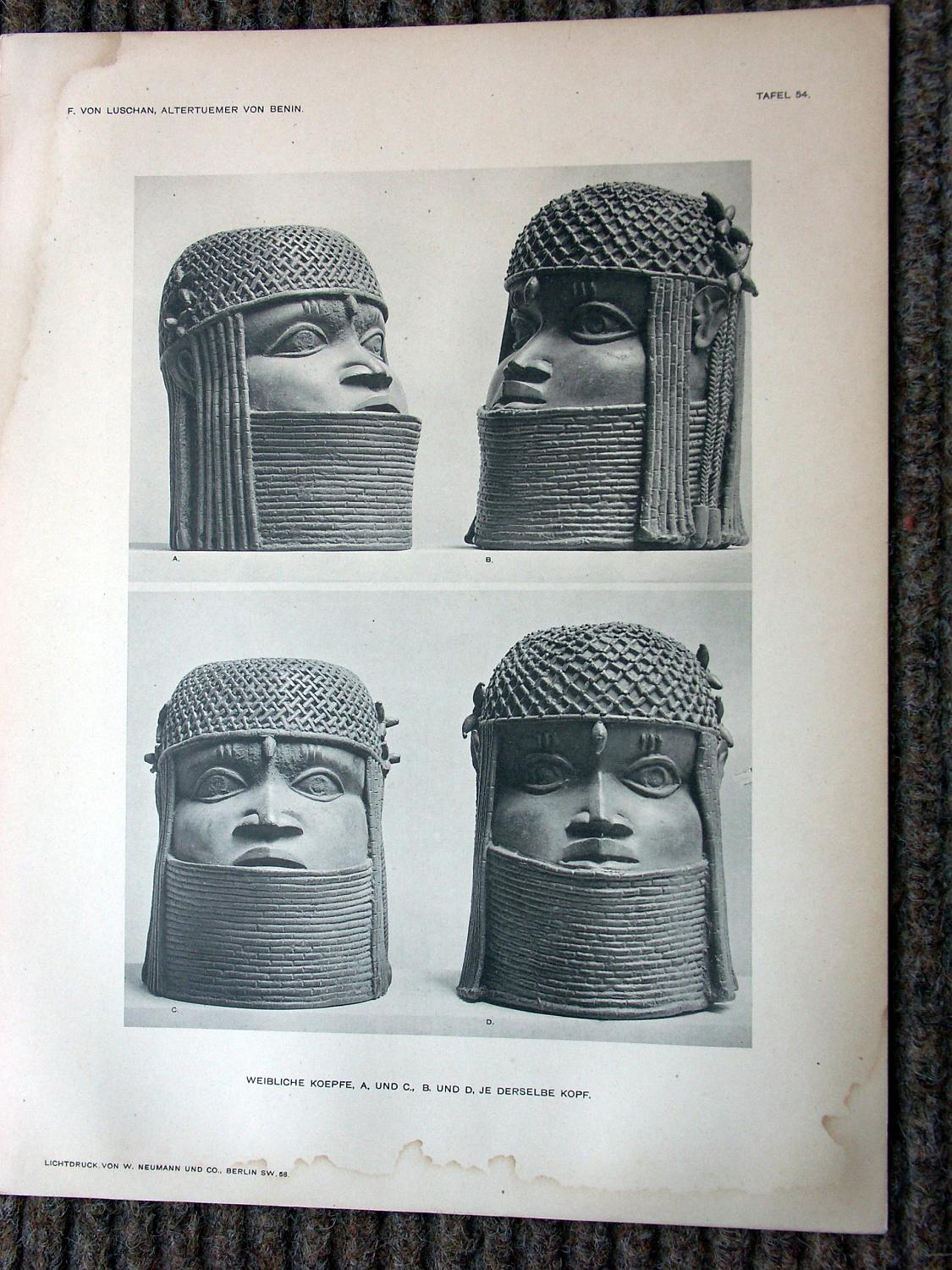 “The German language has the word for it: Zeitgeist. The Zeitgeist, literally, „time spirit“, the attitude or general outlook of a specific time or age; The Zeitgeist of the early twenty-first century where restitution and redemption is concerned is so much more humane than that of the twentieth century”. (35)
“The German language has the word for it: Zeitgeist. The Zeitgeist, literally, „time spirit“, the attitude or general outlook of a specific time or age; The Zeitgeist of the early twenty-first century where restitution and redemption is concerned is so much more humane than that of the twentieth century”. (35)
The language and stance of the Berlin government appears to be the same as other responses by Western governments to former colonial States and their peoples. The ton and response of the Berlin government correspond to the tenets of the now discredited Declaration on the Importance and Value of Universal Museums (DIVUM) in so far as the German authorities refuse to envisage the return of any of the Benin bronzes to the people of Benin. They are willing to assist the Nigerians in cataloguing the Benin Bronzes; they are willing to put this catalogue on the internet. What they are not willing to do is to consider the return of any of the 507 objects. German authorities subscribe to the false notion in the discredited Declaration on the Value and Importance of Universal Museum that:
“Over time, objects so acquired – whether by purchase, gift, or partage – have become part of the museums that have cared for them, and by extension part of the heritage of the nations which house them. Today we are especially sensitive to the subject of a work’s original context, but we should not lose sight of the fact that museums too provide a valid and valuable context for objects that were long ago displaced from their original source” (36)
What the Berlin government is saying is that they are not prepared to loosen or give up the political and cultural hegemony that, in line with other Western States, they have established over Africa and Africans. Much of this domination is 500 years old and forms part of a mechanism that allows the West to dictate to Africa in all domains, including culture. These Benin bronzes are largely records and symbols of power and to return them would imply that the West has finally accepted Africans as capable of looking after themselves and not in need of any outside control. Such a concession has never been considered by the West which maintains supremacy even in matters of African art .There are by far better and more African art icons in Europe than in Africa itself. Those, including Africans, who want to study African art, need to go to Europe, to places such as the Ethnologisches Museum, Berlin, to see the African icons. The West is not yet ready to return to Africa the symbols of power seized in colonial and imperialist wars. The West remains symbolically and factually the master of Africa and its destiny. This is the affirmation implicit in the refusal to hear demands for restitution or to consider the possibility of returning any Benin bronze.
If the Berlin museum were operating on the basis of the ICOM Code of Ethics, they would have taken the initiative to meet with representatives of the Oba to discuss the return of the Benin Bronzes as required by rules 6.2 and 6.3 of the Code. They would not be seen as disputing ownership of the artefacts and definitely would not be denying, contrary to all evidence that they ever heard of a desire by the people of Benin to have their artefacts back. This is clearly unworthy of Germany.
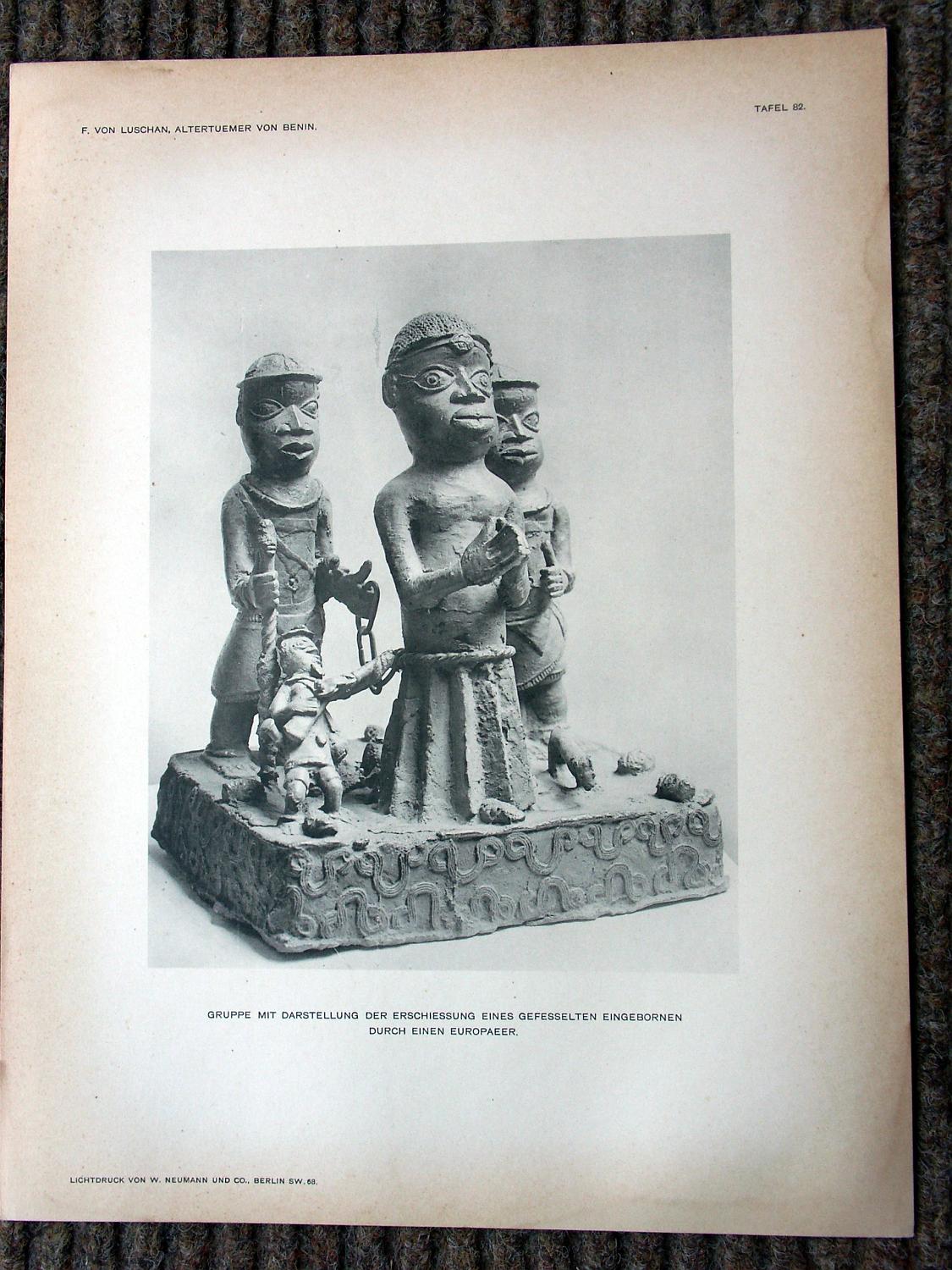 Most young Germans are surprised to hear that their government is in dispute with Nigerians over the ownership of the Benin Bronzes. They are revolted to learn that some 507 or more pieces are in Berlin alone and that the German authorities are not willing to return even a single object. Somebody will have to explain the discrepancy in the number of Benin artefacts in the Ethnologisches Museum, Berlin. (37) The youth wonder what those African pieces have to do with German culture. They cannot understand how their government can boast with African artefacts and wonder whether German culture does not have enough to show. Decorating yourself with the feathers of others seems very objectionable, especially when those feathers have been stolen.
Most young Germans are surprised to hear that their government is in dispute with Nigerians over the ownership of the Benin Bronzes. They are revolted to learn that some 507 or more pieces are in Berlin alone and that the German authorities are not willing to return even a single object. Somebody will have to explain the discrepancy in the number of Benin artefacts in the Ethnologisches Museum, Berlin. (37) The youth wonder what those African pieces have to do with German culture. They cannot understand how their government can boast with African artefacts and wonder whether German culture does not have enough to show. Decorating yourself with the feathers of others seems very objectionable, especially when those feathers have been stolen.
The youth realize in this matter that the commandment “Thou shall not steal” does not seem to be applied by their own authorities as far as cultural artefacts are concerned.
What will Nigerian authorities and the public make out of the statement from Berlin that Nigerian representatives have not brought to the attention of the Germans the demand for the restitution of the Benin bronzes looted in 1897?
What is sure is that the people of Benin and Nigeria cannot accept that by putting information about the looted artefacts on internet or cataloguing them, they lose their right to recover the precious artefacts that are now decorating Western museums which are supposedly cooperating with Nigeria. Records and symbols of Benin civilization belong to Benin and should be returned without any further excuses.
Kwame Opoku, 6 September, 2013.
NOTES
1. “Die Rückgabe jener Kulturschätze, die unsere Museen und Sammlungen direkt oder indirekt dem Kolonialsystem verdanken und die jetzt zurückverlangt werden, sollte ebenfalls nicht mit billigen Argumenten und Tricks hinausgezögert werden“. Gert v. Paczensky and Herbert Ganslmayr, Nofretete will nach Hause, p.185, C. Bertelsmann, München, 1984.
2. The Humboldt-Forum-Planning-Process-Perspectives in the Berliner Schloss Stiftung Preussischer Kulturbesitz, 2013
Humboldt Forum, Baessler Archiv, Beiträge zur Völkerkunde, Band 59. (Eds)
Viola König and Andrea Scholz, 2011.
The opponents of this project that would involve transferring artefacts from the Ethnologisches Museum from its present location in the suburb, Dahlem, to the centre of Berlin have issued protest documents in which they state their objections. Resolution; Stop the planned construction of the Humboldt Forum in Berlin Palace
NO HUMBOLDT 21 http///no=humboldt21.de/
Der Anti Humboldt www.fzz.cc/slides
„Colonialism on display“
Nadia Vancauwenberghe www.exberliner.com/culture…colonialism-on-disp
3. Abgeordnetenhaus Berlin Drucksache 17 / 12 360 Kleine Anfrage 17. Wahlperiode Kleine Anfrage der Abgeordneten Clara Herrmann (GRÜNE) vom 28. Juni 2013 (Eingang beim Abgeordnetenhaus am 01. Juli 2013) und Antwort (Postkoloniale) Auseinandersetzung mit dem Humboldt Forum.
The Federal Minister for Culture has also given answers to similar questions from the Green Party, confirming the views from the Berlin Government-Annex II
4. K. Opoku, “Benin Plan of Action for Restitution; Will this Ensure the Return of the Looted Benin Artefacts? http://www.modernghana.com
6. K. Opoku, ibid
7. Ekpo Eyo, Museum, Vol. XXL, no 1, 1979, “Return and Restitution of cultural property”, pp. 18-21, at p.21, Nigeria.
8. BBC NEWS, “Nigeria demands treasures back”, http;//news.bbc.co.uk
9. Appendix 21. The Case of Benin. Memorandum submitted by Prince Edun Akenzua www.publications.parliament.uk/pa/ …/371ap27.htm.March 2000
10. K. Opoku, Opening of the exhibition “Benin-Kings and Rituals
www.culture-and-development.info/
K. Opoku, “Director of Museum für Völkerkunde Wien rejects again all claims for return of stolen artworks actually exhibited in his museum”
www.afrikanet.info
11. OmoN’Oba Erediauwa CFR, Oba of Benin, in his Introductory Note to the catalogue of the exhibition’ Barbara Plankensteiner (ed) Benin Kings and Rituals, Court Arts from Nigeria, Snoeck Publishers, 2007, p. 13.
12. See Yusuf Abdallah Usman, “Controversial Donation of Looted Benin Art” in K. Opoku, “Nigeria Reacts to Donation of Looted Benin Artefacts to Museum of Fine Arts, Boston”, http://www.modernghana.comYusuf Abdallah Usman,“Nigeria’s antiquities abroad must return -DG”
“Efforts at dialoguing have brought about recent interface with most of the major museums in Europe. The Commission instigated discussions on modalities of returning Benin objects to Nigeria. This has resulted in the meeting of the major museums in Europe and the Commission in Vienna, Austria and Berlin, Germany in 2010 and 2011 respectively. A third meeting is scheduled for Benin City before the end of this year. The heads of these European museums have signified their intention to attend this meeting. It will be recalled that Nigeria was one of the strong voices in the Egyptian Conference of 2010 where return of the pieces of each countries priceless antiquities were demanded to be returned to their countries of origin.”
“Nigeria’s antiquities abroad must return“ http://www.ncmmnigeria.com/nigerias-antiquities-abroad-must-return-dg/
The Nation, “Mission to repatriate stolen Benin artefacts”
“They were stolen over 116 years ago and taken to Europe. These over 3,000 pieces of bronze were looted from the old Benin Empire during the 1897 British Punitive Expedition. Today, these priceless bronze works are trapped behind glass walls in European galleries and museums. Hope for their return rose last week as some representatives of European museums met with their Nigerian counterparts and officials of the Benin Royal palace on the issue. Assistant Editor (Arts) OZOLUA UHAKHEME reports.”
thenationonlineng.net /…/mission-to-repatriate-stolen.
“Nigeria Demands Return of Stolen Benin Artefacts from U.S.”
allafrica.com /stories/ 201207190121.html
Daily Times, “NCMM demands return of artifacts from US museum”www.dailytimes.com.ng /…
13. nefertiti in absurdity: how often must egyptians ask germans for the …
www.modernghana.com
14. K. Opoku, “Is the Absence of a Formal Demand for Restitution a Ground for Non-Restitution? www.modernghana.com
15. The United Nations General Assembly has since 1972, passed almost every year a resolution the return of cultural property;
- Resolution 3026 A (XXVII) of 18 December 1972
- Resolution 3148 (XXVIII) of 14 December 1973
- Resolution 3187 (XXVIII) of 18 December 1973
- Resolution 3391 (XXX) of 19 November 1975
- Resolution 31/40 of 30 November 1976
- Resolution 32/18 of 11 Novembrer 1977
- Resolution 33/50 of 14 December 1978
- Resolution 34/64 of 29 November 1979
- Resolutions 35/127 and 35/128 of 11 December 1980
- Resolution 36/64 of 27 November 1981
- Resolution 38/34 of 25 November 1983
- Resolution 40/19 of 21 November 1985
- Resolution 42/7 of 22 October 1987
- Resolution 44/18 of 6 November 1989
- Resolution 46/10 of 22 October 1991
- Resolution 48/15 of 2 November 1993
- Resolution 50/56 of 11 December 1995
- Resolution 52/24 of 25 November 1997
- Resolution 54/190 of 17 December 1999
- Resolution 56/97 of 14 December 2001
- Resolution 1483 of 22 May 2003 by the Security Council of the UN concerning Iraq
- Resolution 58/17 of 3 December 2003
- Resolution 61/52 of 4 December 2006
- Resolution 64/78 of 7 December 2009
- Resolution A.67/L.34 of 5 December 2012
From UNESCO website, www.unesco.org
16. www.unesco.org/new/en/culture/themes/restitution-of-cul.
17. Ana Filipa Vrdoljak, International Law, Museums and the Return of Cultural Objects, Cambridge University Press, Cambridge, 2006, p.302
18. The Convention on the Means of Prohibiting and Preventing the Illicit Import, Export and Transfer of Ownership of Cultural Property (1970) www.unesco.org/
19. http://icom.museum/the-vision/code-of-ethics/
20. There is a vast amount of literature on the notorious British invasion of Benin in 1097. I mention here just a few.
Ekpo Eyo, “Benin: The sack that was”. http://www.dawodu.net/eyo.htm ,”The
Dialectics of Definitions: “Massacre” and “Sack” in the History of the Punitive
Expedition”, African Arts, 1997, Vol. XXX, No.3, pp. 34-35.
Wikipedia, “Benin Expedition of 1897” http://www.dawodu.net/eyo.htm
K. Opoku, “Benin to Berlin Ethnologisches Museum: Are Benin Bronzes Made in Berlin?” http://www.museum-security.org
Frank Willet, “Benin” in Afrika: Kunst und Kultur (ed.) Hans-Joachim Koloss, Prestel Verlag, Munich, 1999 p. 43 states that Phillips and his troops had peaceful intentions, and that the guns they had with them had been packed away and not ready for usage.
The story of Benin has been told several times but I have always found the short account by Sylvester Okwunodu Ogbechie very useful:
“In February 1897, an elite British force of about 1200 men (supported by several hundred African auxiliary troops and thousands of African porters) besieged Benin City, capital of the Edo Kingdom of Benin, whose ruler, the Oba Ovonramwen sat on a throne that was a thousand years old. The British Punitive Expedition used Maxim machine guns to mow down most of the Oba’s 130,000 soldiers and secure control of the capital city. They set fire to the city and looted the palace of 500 years worth of bronze objects that constituted the royal archive of Benin’s history, an irreplaceable national treasure. The king and his principal chiefs fled into the countryside, pursued by British forces who lay waste to the countryside as a strategy to force the people of Benin to give up their fugitive king. According to Richard Gott, for a further six months, a small British force harried the countryside in search of the Oba and his chiefs who had fled. Cattle was seized and villages destroyed. Not until August was the Oba cornered and brought back to his ruined city. An immense throng was assembled to witness the ritual humiliation that the British imposed on their subject peoples. The Oba was required to kneel down in front of the British military “resident” the town and to literally bite the dust. Supported by two chiefs, the king made obeisance three times, rubbing his forehead on the ground three times. He was told that he had been deposed. Oba Ovonramwen finally surrendered to stem the slaughter of his people. Many of his soldiers considered his surrender an unbearable catastrophe and committed suicide rather than see the king humiliated. A significant number, led by some chiefs, maintained guerrilla warfare against the British for almost two years until their leaders were captured and executed. The remaining arms of the resistance thereafter gave up their arms and merged back into the general population.”
21. Der überwiegende Teil der heute 507 Objekte umfassenden Benin-Sammlung des Ethnologischen Museums wurde zwischen 1897 und 1925 auf dem Kunst-markt in London, teilweise auch in Lagos erworben. Der Senat und die Stiftung Preußischer Kulturbesitz sind der Auffassung, dass die Objekte rechtmäßig erworben wurden und es für eine Restitution dieser Sammlung keine völkerrechtliche Grundlage gibt.“ Drucksache 17 / 12 360 Kleine Anfrage 17
See note 2 above.
22. Elizabeth Coombes, Reinventing Africa, Yale University Press, New Haven, 1994,
pp. 59-60; se also, John Mack, L’ethnographie: un catalysateur, p.227 in: Du Musée colonial au musée des cultures du monde, P Maisonneuve et Larose, Paris, 2000
23. See a portrait of von Luschan in K, Opoku, “Benin to Berlin Ethnologisches Museum” Are Benin Bronzes Made in Berlin?” Annex I.www.modernghana.com.
24. Ana Filipa Vrdoljak, International Law, Museums and the Return of Cultural Objects, Cambridge, University Press, Cambridge, 2006, p.26.
25. Andy Ho, “Case for returning pillaged antiquities”The Straits Times 12-03-2009.
26. Neil Brodle -“Compromise and restorative justice: More about Benin” http://www.museum-security.org/brodie_ benin_ 2011. pdf
27. Seit 2010 gibt es regelmäßige Treffen zwischen Vertreterinnen und Vertretern des Königs von Benin, der National Commission of Museums and Monuments in Nigeria und verschiedenen europäischen Museen mit großen Benin-Sammlungen (London, Wien, Leiden, Stockholm, Dresden) zur Frage des Umgangs mit Objekten aus dem Königreich Benin. Gemeinsam vereinbartes Ziel aller Beteiligten ist es, langfristig eine Möglichkeit zu finden, Objekte aus europäischen Benin-Sammlungen in Nigeria zu präsentieren. Zurzeit liegt der Schwerpunkt der Arbeit auf der Dokumentation von Benin-Sammlungen in Europa, der Bereitstellung dieser Dokumentation im Internet sowie der Intensivierung der Zusammenarbeit aller beteiligten Museen und Institutionen.“
See note 3 above.
28. The Guardian, “Amid hope of restitution, Nigeria hosts foreign museums”
“As Nigeria hosts some representatives of holders of the country’s looted cultural objects as part of efforts towards the return of the controversial artefatcs, the country’s dialogue or diplomatic approach is once again on the spot.” Tajudeen,15 February 2013,
www.ngrguardiannews.com ”Amid hope of restitution, Nigeria hosts foreign museums”
The Guardian Nigeria, 15.2.2013
Nigerian Tribune, Stolen Benin artefacts: Hope of retrieval beckons – Nigerian Tribune
“The Benin National Congress recently picked up the struggle from where previous groups had stopped. BNC argued that the Federal Government was not doing enough, saying that a proactive government would strive to use every diplomatic and international legal means to redress the injustices done to its federating units. The group called on President Goodluck Jonathan to constitute a high-powered committee to prosecute the task of repatriating all looted Benin artefacts. So, when the National Commission for Museums and Monuments (NCMM), led by its Director General, Mr Yusuf Abdallah Usman, last month visited Benin on the same mission, there was indeed hope that perhaps the long lost treasures would return home one day.”
tribune.com.ng /… /6655-stolen-benin-artefacts-hope…
29. K. Opoku,“Benin Plan of Action(2): Will this Miserable Project Be the Last Word on the Looted Benin Artefacts?”http://www.modernghana.com
30 „Der Senat ist überzeugt davon, dass die „Ethischen Richtlinien für Museen von ICOM“ die Grundlage für die Arbeit der Museen in Berlin bilden und sie sich ihrer historischen und politischen Verantwortung beim Umgang mit Erwerbungen aus der Kolonialzeit bewusst sind.“.
Drucksache 17 / 12 360 Kleine Anfrage 17. See note 2 above.
31. The literature on German colonies is vast. We mention below a few that may interest readers:
Ames, Eric, Marcia Klotz, and Lora Wildenthal, eds.Germany’s Colonial Pasts. Lincoln: University of Nebraska Press, 2005
Helmut Bley, Kolonialherrschaft und Sozialstruktur in Deutsch-Sűdwestafrika (1894-1914) Hamburg, Leibniz Verlag, 1968
Horst Drechsler, Südwestafrika unter deutscher Kolonialherrschaft.
Der Kampf der Herero und Nama gegen den deutschen Imperialismus (1884-
1915) Berlin, Akademie Verlag, 1985;
Horst Gründer, Geschichte der deutschen Kolonien, Paderborn: Schöningh, 2000.
W. O .Henderson, Studies in German Colonial History, Frank Cass, 1962, London.
Forster, Stig, Wolfgang Mommsen, and Ronald Robinson, eds. Bismarck, Europe and Africa: The Berlin Africa Conference 1884–1885 and the Onset of Partition. Oxford: Oxford University Press, 1988
Stoecker, Helmut, ed. German Imperialism in Africa: From the Beginnings Until the Second World War. London: Hurst, 1987
Speitkamp, Winifred, Deutsche Kolonialgeschichte, Stuttgart, Reclam, 2005.
Helmut Strizek, Kolonien Geschenkte:Ruanda und Burundi unter deutscher Herrschaft, Berlin, Ch. Links Verlag, 2006
Ulrich van der Heyden and Joachim Zeller (Eds.), Macht und Anteil an der Weltherrschaft, Unrast Verlag, Münster, 2005.
Regarding the Ethnology museum and the acquisition of artefacts from the colonies, one could read the following with great benefit:
Manfred Gothsch, Die deutsche Völkerkunde und ihr Verhältnis zum Kolonialismus, Nomos Verlag, Baden-Baden, 1983.
H.Glenn Penny, Ethnology and Ethnographic Museums in Imperial Germany; Objects of Culture, The University of North Carolina Press, Chapel Hill and London, 2002.
Christine Stelzig, Afrika am Museum für Völkerkunde zu Berlin 1873-1919, Centaurus Verlag, Herbolzheim 2004.
Andrew Zimmerman, Anthropology and Antihumanism in Imperial Germany, University of Chicago Press, 2001.
On the continuity and discontinuity between German colonialism and Nazi ideology and practice, see inter alia, Volker Langbein and Mohammad Salama (eds) German Colonialism–Race,the Holocaust,and Postwar Germany, Columbia University Press,New York, 2011.
Sara Friedrichsmeyer, Sara Lennox and Susanne Zantop (eds) The Imperialist Imagination-German Colonialism and Its Legacy provide interesting perspectives on the reluctance to examine the German colonial past.
A detailed overview of the available literature can be found at the end of the excellent book, Conrad, Sebastian. German Colonialism: A Short History. Cambridge, UK: Cambridge University Press, 2012 This is an English translation of the German original Deutsche Kolonialgeschichte,Verlag C. H. Beck, Munich, 2008.
32. Helmut Stoecker,” Germans in the Tropics”: Essays in German Colonial History, (Eds.), Arthur J. Knoll and Lewis H. Gann, Greenwood Press, New York, 1987, p.125.
33. „Dass der Erwerb von Ethnographica in der Kolonialzeit auf der Grundlage mehr oder minder ‘struktureller Gewalt’ erfolgte, soll hier in diesem Rahmen nicht näher verfolgt werden. Einzelnen Zeitgenossen war diese Tatsache im Übrigen durchaus bewußt. So schrieb der Afrikareisende und Resident des Deutschen Reiches in Ruanda, Richard Kandt, 1897 an Felix von Luschan, den stellvertretenden Direktor des Berliner Völkerkunde-Museums: Überhaupt ist es schwer, einen Gegenstand zu erhalten, ohne zum mindesten etwas Gewalt anzuwenden. Ich glaube, daß die Hälfte Ihres Museums gestohlen ist’. p77
Cornelia Essner, “Berlins Völkerkunde-Museum in der Kolonialära: Anmerkungen zum Verhältnis von Ethnologie und Kolonialismus in Deutschland“, in: Berlin in Geschichte und Gegenwart – Jahrbuch des Landesarchivs Berlin, (Ed.) Hans J. Reichardt, Siedler Verlag, 1986
34. K. Opoku, “Return of Stolen Skulls by Germany to Namibia; Closure of a Horrible Chapter?” www.africavenir.org
35. Magnus Magnusson, in Jeanette Greenfield, The Return of Cultural Treasures, Second Edition, Cambridge University Press, 2007, p.12.
36. K. Opoku, “Declaration on the Importance and Value of Universal Museums; Singular Failure of an Arrogant Imperialist Project”www.modernghana.com
37. I reproduce below, a note I made on the issue of how many Benin artefacts the Ethnologisches Museum, Berlin has from my article, “Benin to Berlin Ethnologisches Museum: Are Benin Bronzes Made in Berlin?”, http://www.modernghana.com
The discrepancies in numbers, between 507 the Berlin government states and the 580 which Luschan and others give, require explanation from the Museum. We know of course that the British sold some of the looted Bronzes not only in 1897 but in fairly recent times. See Martin Bailey, “BBC Sold Benin Bronzes” www.forbes.com Did the Germans also sell some Benin Bronzes? What happened to the Benin artefacts in the museums of the former DD (German Democratic Republic)?
Barbara Plankensteiner states in her latest book Benin, 5 Continents Editions, 2010, p48, “ Felix von Luschan, the curator at Berlin’s Museum für Völkerkunde, played a major role, encouraging his colleagues to collect, and he himself amassing the largest collection in the world, consisting of some more than 550 pieces.”
“Paula Ivanov, ‘African Art in the Ethnologisches Museum in Berlin’, African Arts, Vol.33, No.3, p.21. Ivanov mentions in this article, that the Ethnologisches Museum, Berlin has 482 Benin objects (p21) but P.Roese in his article, ‘Felix von Luschan (1854-1924) und Benin – Hans Grimm gewidmet’, (Tribus, Vol.48, 1999, pp.173-182) states that Felix von Luschan secured for the Museum 580 pieces. Anja Laukötter, in herexcellent book, Von der ‘Kultur’ zur ‘Rasse’ – vom Objekt zum Körper : Völkerkundemuseen und ihre Wissenschaft zu Beginn des 20.Jahhunderts (Transcript Verlag, Bielefeld, 2007,P160), cites Luschan as follows:
‘Im ganzen sind rund 2400 Benin Stűcke zu meiner Kenntnis gelangt: davon sind 580 in Berlin, 280 im Brit.Museum, 227 in Rushmore (die von Pitt Rivers hinterlassene Sammlung), 196 in Hamburg,182 in Dresden, 167 in Wien, 98 in Leiden, 87 in Leipzig, 80 in Stuttgart, 76 in Cőln und 51 in Franfurt a .M.’
What explains this difference of some 73 pieces? Perhaps the Ethnologisches Museum kept the best 503 and distributed the remaining 73 to the other German museums?
In this connection, it may be useful to look at the very interesting study by Charlotta Dohlvik, Museums and their Voices: a Contemporary Study of the Benin Bronzes, Master’s Dissertation, May 2006, Göteborg University. Dohlvik states that ‘the largest collection of Benin items are found at the Ethnological Museum in Berlin’. The author also found out that the ‘collections of Benin heads are strongly concentrated in museums of Western Europe and the United States’ and that ‘The often-heard statement about the collection of Benin material being dispersed all over the world is thus a point of description that should be expressed with some moderation. p.29”
See also Gisela Völger, Curator, Trader, Benin Scholar – Felix von Luschan -An Austrian in Royal-Prussian Museum Service, in Benin Kings and Rituals (Ed.) Plankensteiner ,pp. 213-225. Völger gives the following distribution figures for the 2400 objects said to have reached Europe:
In Germany: Berlin 580, Hamburg 196, Dresden 182, Leipzig 87, Stuttgart 80, Cologne 73, Munich, Braunschweig, Mannheim, Freiburg and others in Germany not more than 95 items.
Outside Germany: British Museum 280, Pitt Rivers Museum (Oxford) and Pitt Rivers country residence, Rushmore in Farnham/Dorset 327, Various members of the Punitive Expedition of 1897 300, Leiden 98, Chicago 33, St. Petersburg 40, Vienna 167.
Laukötter, gives the following distribution, following Luschan: of the 2400 objects that left Benin: 580 in Berlin, 280 in British Museum, 227 in Rushmore, the Pitt Rivers Collection, 196 in Hamburg, 182 in Dresden,167 in Vienna, 98 in Leiden, 87 in Leipzig, 80 in Stuttgart, 76 in Cologne, and 51 in Frankfurt am Main. Laukötter, op. cit. p.160.“
Literaturtip:
Felix von Luschan, Die Altertümer von Benin, hrsg. mit Untertstützung des Reichs-Kolonialministeriums, der Rudolf Virchow- und der Arthur Baesssler-Stiftung, 1919
